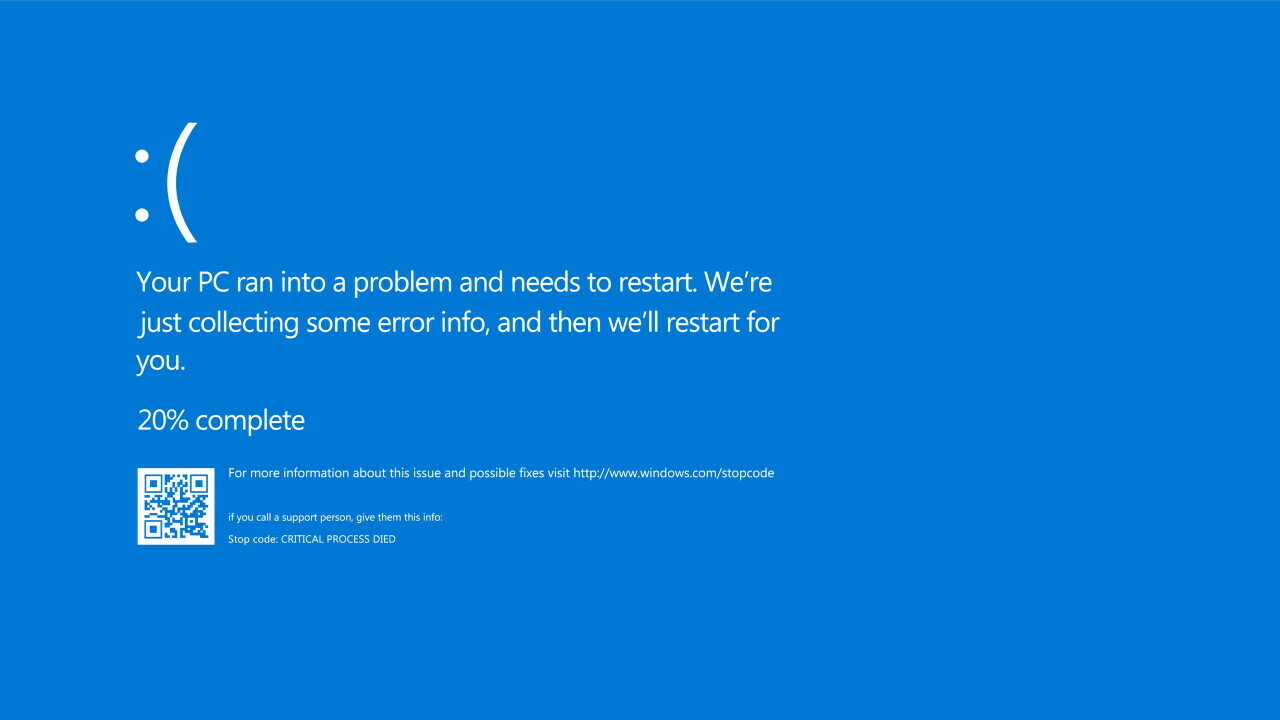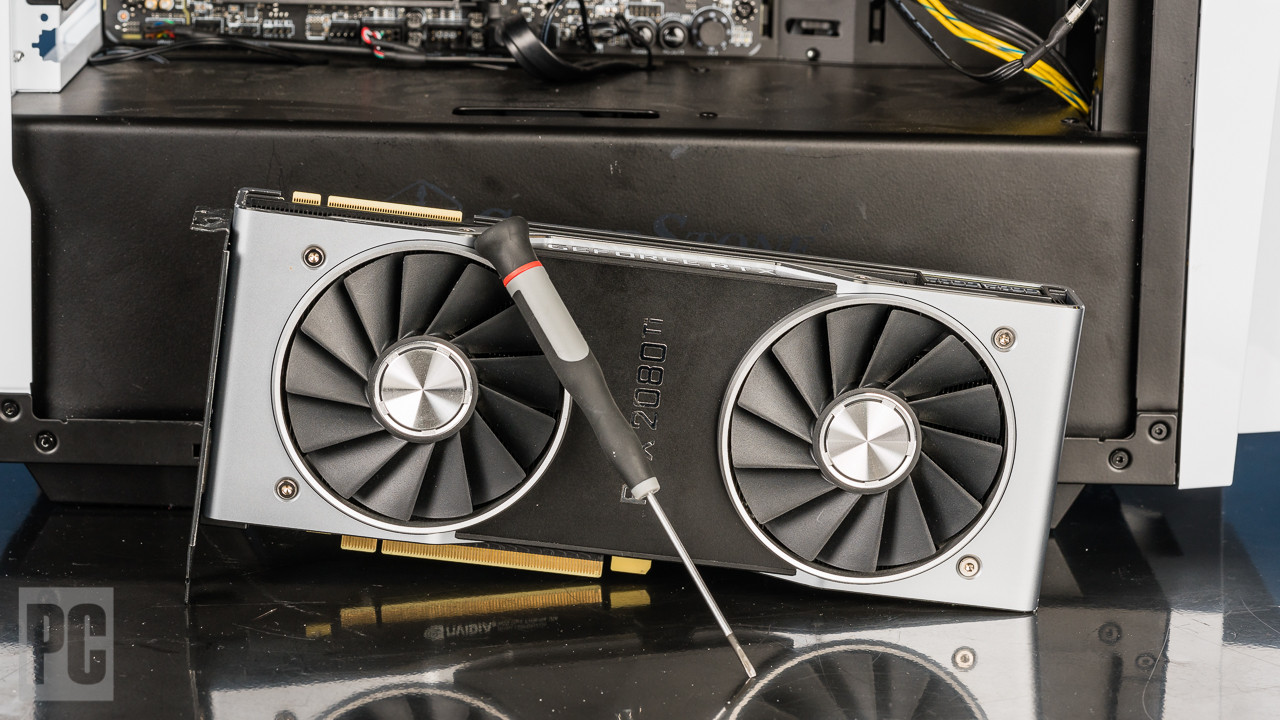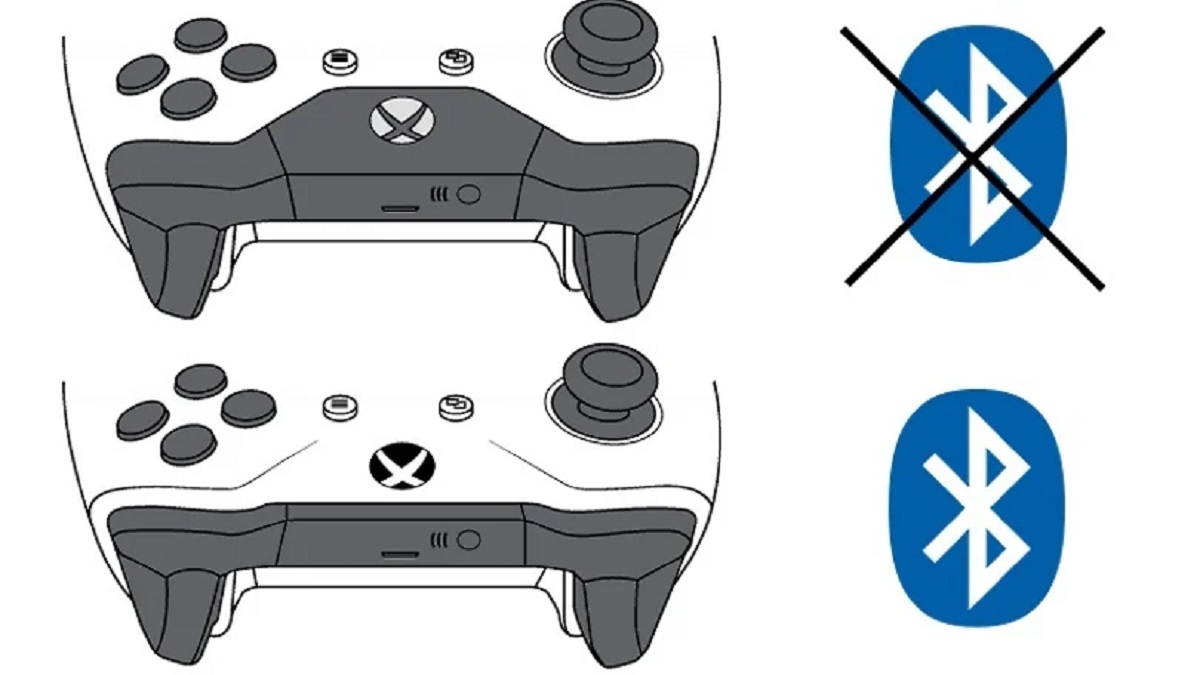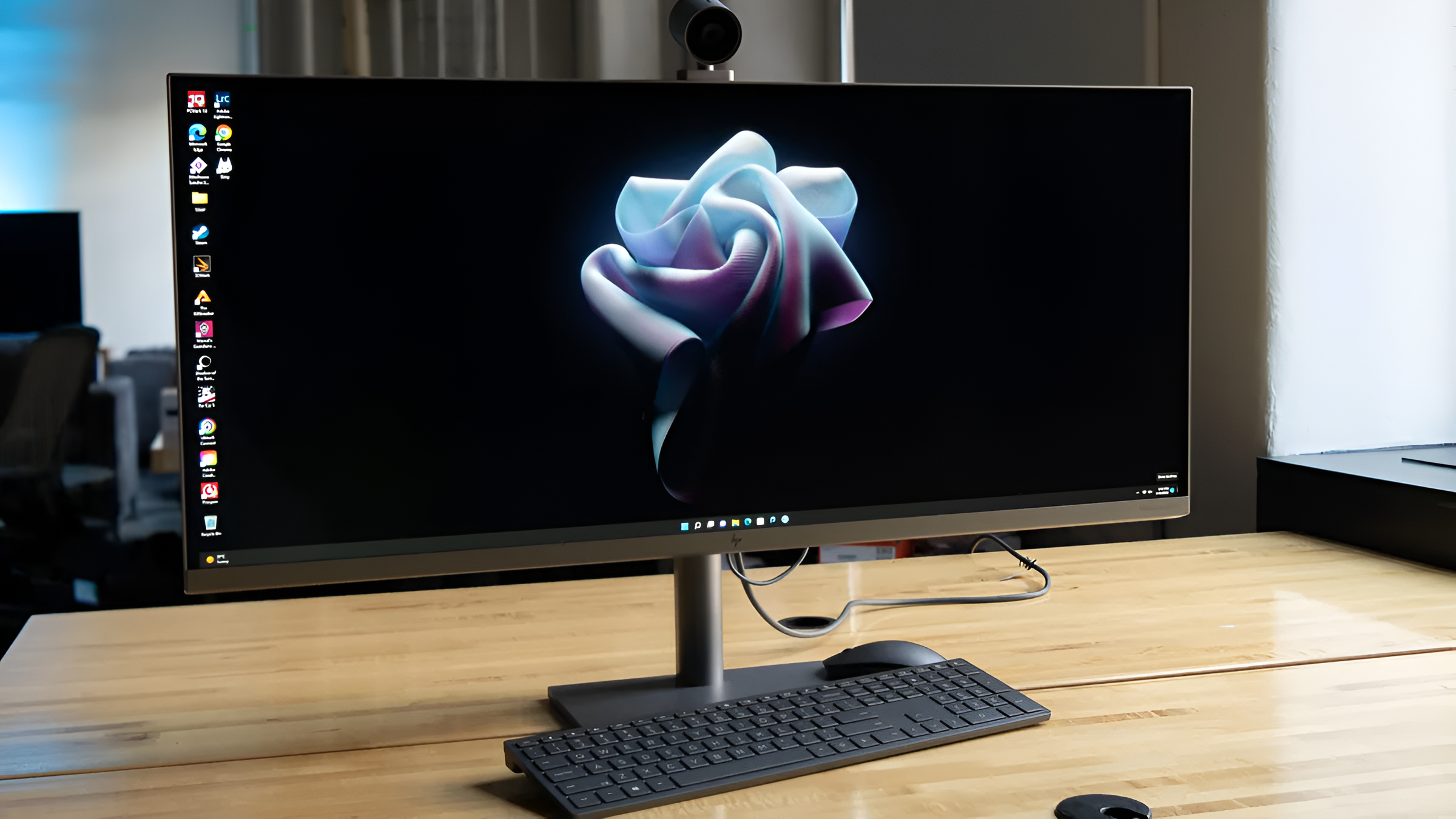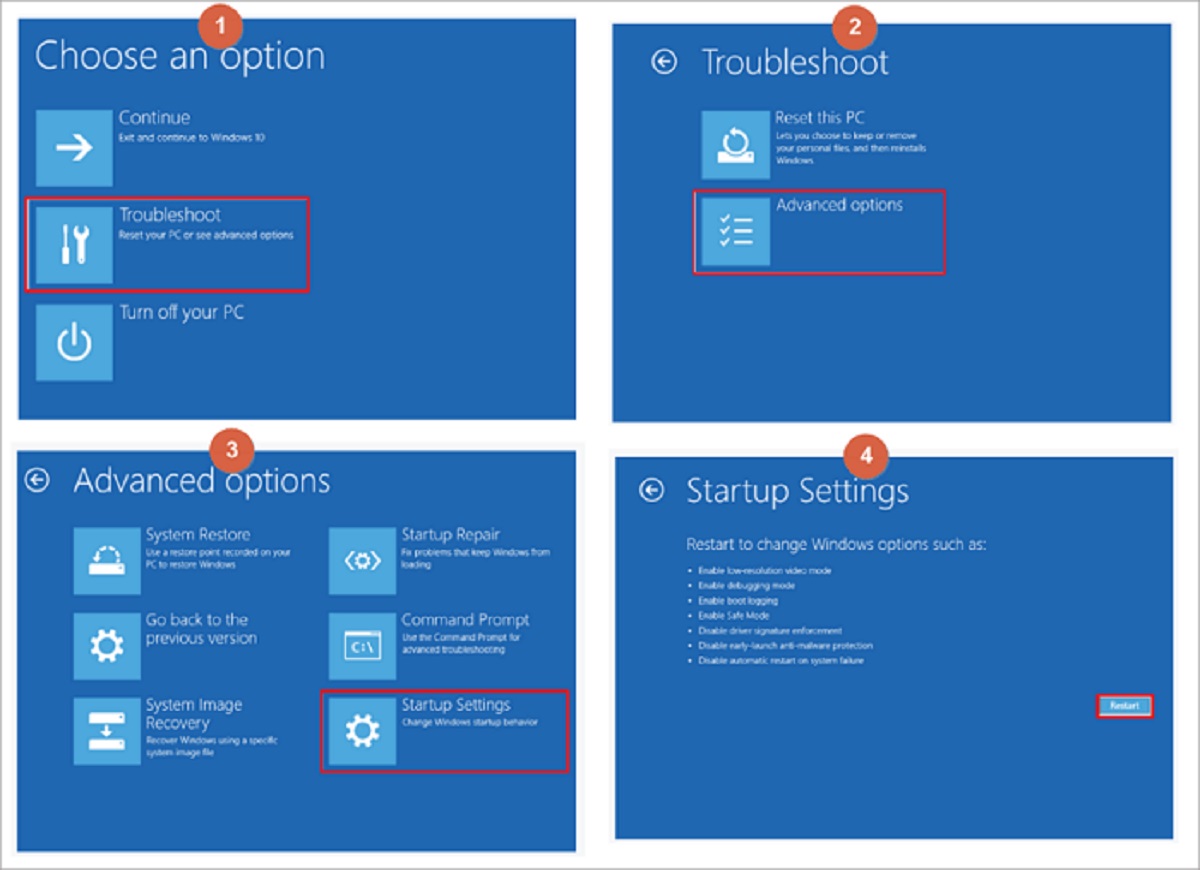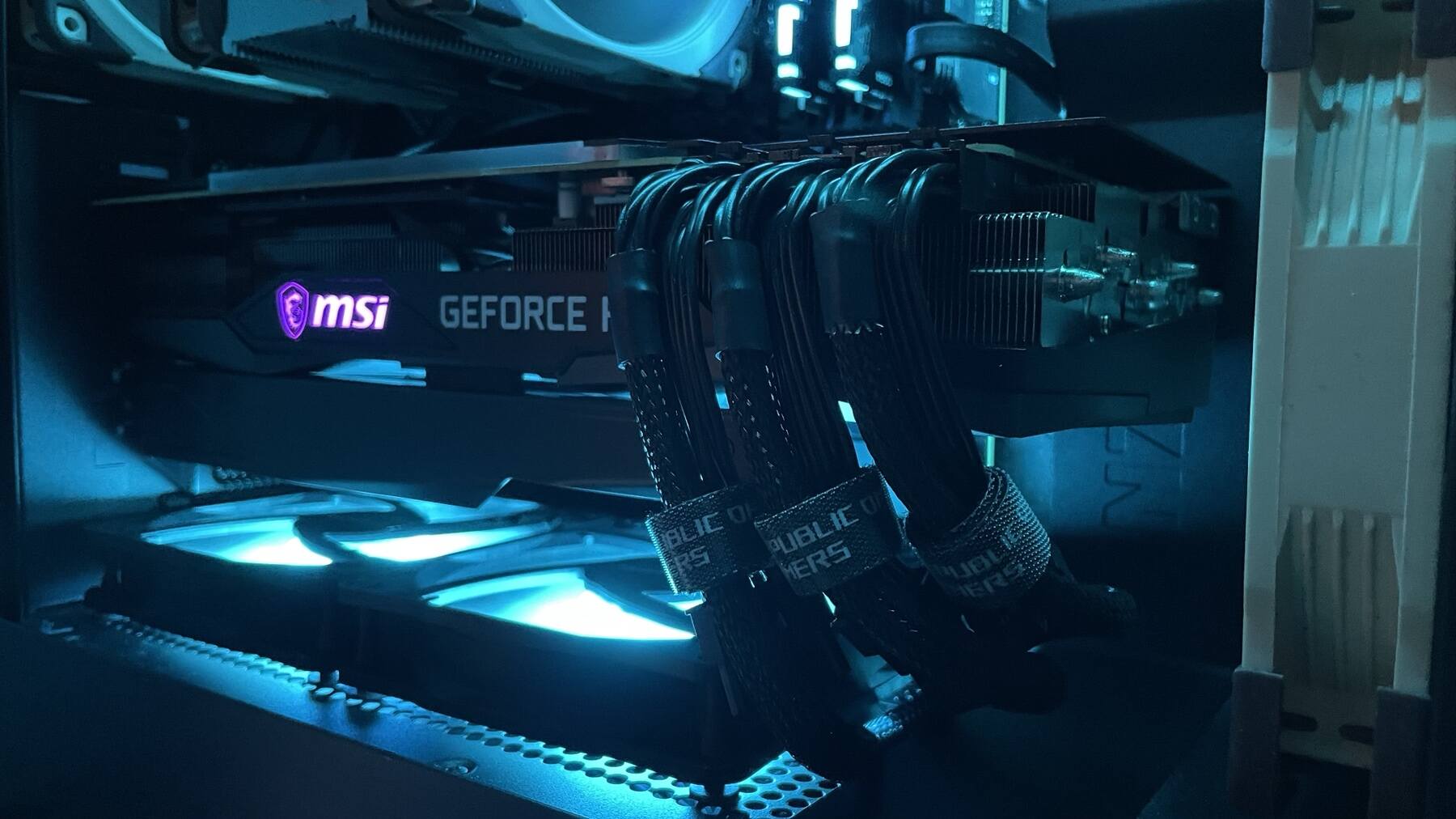Introduction
Have you ever experienced the frustrating situation where your PC keeps restarting, interrupting your work or causing you to lose important data? If so, you’re not alone. Many computer users have encountered this issue at some point, leading to confusion and annoyance. Understanding the reasons behind this problem can help you find a solution and get your PC running smoothly again.
There can be several factors that contribute to a PC frequently restarting. While it can be quite alarming, it’s important not to panic. In some cases, the problem may be as simple as a software glitch, while in other instances, it could be related to more serious hardware issues. In this article, we will explore common causes of PC restarting problems and discuss potential solutions.
It is worth noting that a PC restarting on its own can be a symptom of various underlying issues. Therefore, it is crucial to identify the root cause of the problem to effectively address it. By troubleshooting and understanding the different possibilities, you can save time and money by implementing the correct solution.
Overview of PC Restarting Issues
PC restarting issues can be frustrating and disruptive to your productivity. When your computer restarts unexpectedly, it not only interrupts your work but can also cause the loss of unsaved data. Understanding the various factors that can contribute to this problem is essential for finding a solution.
There are several common culprits behind frequent PC restarts, including hardware problems, software issues, overheating, power supply issues, malware or virus infections, Blue Screen of Death (BSOD) errors, insufficient memory, corrupted or outdated drivers, and automatic Windows updates.
Hardware problems can arise due to faulty components such as the motherboard, RAM, or hard drive. If any of these components are damaged or malfunctioning, your PC may restart unexpectedly. Additionally, loose connections or overheating of hardware components can also cause the system to restart.
Software problems can range from conflicts between applications or incompatible software to corrupted system files or registry errors. When these issues occur, the operating system may not function properly and result in frequent restarts.
Overheating is another common cause of PC restarting. Modern computers generate a significant amount of heat, and if the cooling system is inadequate or blocked by dust and debris, the CPU or GPU temperature can rise to dangerous levels, triggering an automatic restart to prevent damage.
Power supply issues can also lead to unexpected restarts. If your power supply is faulty or unable to deliver a stable flow of power to your PC’s components, it can cause the system to shut down and reboot.
Malware or virus infections can cause havoc on your computer, and one of the symptoms can be frequent restarts. Certain types of malicious software can interfere with the system’s functionality and force the PC to restart repeatedly.
The infamous Blue Screen of Death (BSOD) is a critical system error that can lead to sudden restarts. When a BSOD occurs, the system encounters a problem it cannot recover from, triggering a restart to prevent further damage.
Inadequate memory is another possible cause of frequent PC restarts. If your computer does not have sufficient RAM to handle the tasks and applications you are running, it may result in system crashes and restarts.
Corrupted or outdated drivers can also contribute to PC restarting issues. Drivers are essential software components that facilitate communication between hardware devices and the operating system. If these drivers are corrupted or outdated, they can cause instability within the system, leading to restarts.
AdditioNally, automatic Windows updates can sometimes trigger unexpected restarts. When Windows installs updates, it may require a system restart to complete the installation process. While this is generally a necessary step, it can be inconvenient if the restart happens in the middle of your work.
In the following sections, we will explore each of these issues in more detail and provide troubleshooting steps to help resolve the problem.
Hardware Problems
One of the potential causes of frequent PC restarts is hardware problems. Faulty or damaged hardware components can disrupt the normal functioning of the computer, leading to unexpected restarts.
There are several hardware issues that can contribute to this problem. A malfunctioning motherboard can cause instability in the system, causing sporadic restarts. Similarly, if the random-access memory (RAM) modules are defective or not properly seated, it can result in frequent restarts.
Another common hardware issue is a failing hard drive. If your hard drive is experiencing mechanical issues or has bad sectors, it can lead to system crashes and restarts. It is recommended to run disk diagnostic tools to check the health of your hard drive and take appropriate action if issues are detected.
Loose or faulty connections can also cause your PC to restart unexpectedly. Check all the cable connections between the motherboard, power supply, and other hardware components to ensure they are securely attached and functioning correctly.
Overheating of hardware components is another common hardware problem that can result in frequent restarts. When your CPU or GPU becomes too hot, it can trigger an automatic restart to protect the components from damage. Insufficient airflow inside the computer case, dust buildup, or a malfunctioning cooling system can all contribute to overheating. Regularly cleaning the internal components and ensuring proper ventilation can help mitigate this issue.
To diagnose hardware problems, you can run hardware diagnostics tools provided by the manufacturer or use third-party software. These tools can help identify any faulty components or issues with your hardware. If a problem is detected, it may be necessary to replace or repair the faulty hardware to resolve the frequent restarts.
It is recommended to seek professional assistance if you are unsure about diagnosing or fixing hardware problems on your own. A certified technician can thoroughly inspect your computer and provide guidance on the best course of action.
Software Problems
Software problems can also be a significant factor in causing frequent PC restarts. Issues with the operating system, conflicting software, corrupted system files, or registry errors can all contribute to this problem.
One common software issue that can lead to unexpected restarts is a conflict between applications. When two or more programs have compatibility issues or try to access the same system resources simultaneously, it can cause instability and result in system crashes.
Corrupted system files or registry errors can also disrupt the normal functioning of the operating system, leading to frequent restarts. Over time, software installations, updates, and removals can leave behind residual files or invalid entries in the registry, causing instability in the system. Running system repair tools or using specialized software to scan and fix these issues can help resolve the problem.
Incompatible or outdated software can also contribute to restart issues. It is essential to ensure that all software installed on your computer is compatible with your operating system version and other applications. Regularly updating software and keeping it up to date can help prevent compatibility issues and potential system crashes.
Malware and viruses can infiltrate your computer, causing not only security risks but also disruptions to the system. Some types of malicious software can interfere with the operating system’s normal functions, resulting in unexpected restarts. Running a reputable antivirus program and performing regular system scans can help detect and remove any malware infections.
Another software-related problem that can contribute to frequent restarts is driver issues. Drivers are essential software components that enable communication between hardware devices and the operating system. Corrupted or outdated drivers can cause instability and crashes in the system. Updating drivers to the latest version or rolling back drivers that have recently been updated can help address this issue.
It is also worth noting that certain software settings or configurations can lead to unexpected restarts. For example, if your computer is set to automatically restart after a system crash, it can result in a continuous cycle of restarts. Modifying these settings in the advanced system options can help prevent this behavior.
If you suspect that software problems are causing frequent restarts, performing a clean boot can help identify the underlying issue. By starting your computer with only essential services and startup programs, you can determine if a specific application or process is causing the problem.
If all else fails, reinstalling the operating system may be necessary to resolve complex software-related issues. However, it is crucial to back up your data before performing a reinstall to avoid data loss.
Overheating Issues
Overheating is a common problem that can contribute to frequent PC restarts. When the components inside your computer generate excessive heat and cannot dissipate it effectively, the system may automatically restart to prevent damage.
There are several factors that can lead to overheating. Dust accumulation inside the computer case can obstruct airflow, preventing proper cooling of the components. Over time, this can cause the temperature to rise and result in unexpected restarts. Regularly cleaning the internal components, especially fans, heat sinks, and air vents, can help mitigate this issue.
A malfunctioning or inadequate cooling system can also contribute to overheating. If the CPU or GPU cooling fan is not functioning properly or if the heat sink is not seated correctly, it can hinder the dissipation of heat. In such cases, the system may restart to protect the components from thermal damage. Checking the condition of the cooling system and ensuring proper ventilation can help alleviate this problem.
Additionally, overclocking your CPU or GPU can generate more heat than the cooling system can handle, resulting in overheating. Overclocking is the practice of running components at speeds higher than their intended specifications. While it can provide a performance boost, it can also increase the risk of overheating. If you have overclocked your system, consider reverting to the default settings to reduce the temperature and the likelihood of frequent restarts.
It is also important to consider the ambient temperature in the room where your computer is located. If the room temperature is excessively high, it can make it more challenging for the cooling system to keep the components at optimal temperatures. Maintaining a cool environment around your computer can help prevent overheating issues.
Monitoring the temperature of your components using software tools can provide insights into potential overheating problems. Several third-party software programs are available that can display real-time temperature readings for the CPU, GPU, and other components. If you notice consistently high temperatures, it may be necessary to take additional measures to address the heating issue, such as improving the airflow or upgrading the cooling system.
Overall, managing overheating issues requires regular maintenance, proper airflow, adequate cooling, and monitoring of the system’s temperature. By taking proactive steps to ensure effective heat dissipation, you can help prevent unexpected restarts and extend the lifespan of your computer’s components.
Power Supply Issues
Power supply issues can be a significant factor in frequent PC restarts. If your computer is not receiving a stable and consistent flow of power, it can lead to unexpected shutdowns and restarts.
A faulty or failing power supply unit (PSU) can cause disruptions in the voltage and current supplied to your computer’s components. When the power supply fluctuates or fails to provide adequate power, the system may restart as a safety measure.
Inadequate power supply capacity can also trigger restarts, especially if your computer’s power requirements exceed the capabilities of the PSU. Running power-hungry components, such as high-end graphics cards or multiple hard drives, without a sufficient power supply can lead to instability and unexpected restarts. In such cases, upgrading to a higher wattage PSU may be necessary.
Loose or faulty power connections can also contribute to power supply issues. Ensure that the power cables connecting your computer to the outlet and the internal components are securely plugged in. Additionally, inspect the power cables for any signs of damage or fraying that could affect the electricity flow.
Power surges and fluctuations in the electrical supply to your home or office can also impact the stability of your computer. Installing a surge protector or an uninterruptible power supply (UPS) can help regulate the power and protect your computer from sudden voltage spikes or drops that could cause restarts.
If you suspect that power supply issues are causing frequent restarts, it may be necessary to replace the PSU. Consult with a professional or refer to your computer’s documentation to ensure you select a compatible and reliable power supply for your system.
It is important to note that power supply issues can sometimes be difficult to diagnose, as the symptoms can mimic other hardware or software problems. If you are unsure about the source of the issue, seeking professional assistance can help identify and address power supply-related problems effectively.
Regularly monitoring the voltage levels and power usage of your computer using software utilities can also provide insights into potential power supply issues. These tools can help you identify abnormal power fluctuations or insufficient power delivery that may be causing the frequent restarts.
By ensuring a stable and adequate power supply to your computer, you can minimize the risk of unexpected restarts and protect your system from potential damage.
Malware or Virus Infection
Malware or virus infections can wreak havoc on your computer and cause a variety of issues, including frequent PC restarts. Certain types of malicious software can interfere with the normal functioning of the operating system, leading to unexpected crashes and restarts.
Malware can enter your computer through various means, such as malicious email attachments, infected downloads, or visiting compromised websites. Once inside your system, it can initiate harmful activities, disrupt system processes, and trigger restarts as a result.
One symptom of malware infection is frequent and random restarts. If you notice that your PC restarts without any apparent reason or at specific intervals, it could indicate the presence of malware.
Running a reputable and up-to-date antivirus program can help detect and remove malware from your computer. Perform a full system scan using your antivirus software to identify any malicious files or programs. If the scan detects malware, follow the recommended steps to quarantine and remove the threats.
It is crucial to keep your antivirus software updated with the latest virus definitions to ensure optimal protection. Regularly schedule automatic scans to proactively detect and eliminate any potential malware infections.
In addition to antivirus software, consider using anti-malware programs that can provide an extra layer of protection. These programs specialize in detecting and removing various types of malware, including adware, spyware, and rootkits.
Prevention is key when it comes to malware infections. Be cautious when opening email attachments or downloading files from the internet. Avoid clicking on suspicious links and only download from reputable sources. Keep your operating system and applications up-to-date with the latest security patches and updates.
If you suspect that your computer is infected with malware, but your antivirus program fails to detect it, you may need to seek professional assistance. Malware can sometimes be difficult to remove manually, and experts can employ advanced techniques to identify and eliminate persistent threats.
Remember that prevention is always better than cure when it comes to malware infections. By following safe browsing habits and maintaining robust security measures, you can reduce the risk of malware-related issues and preserve the stability of your PC.
Blue Screen of Death (BSOD)
The Blue Screen of Death (BSOD) is a critical error screen that appears when the Windows operating system encounters a problem it cannot recover from. It can be a cause of frustration and frequent PC restarts.
The BSOD usually displays a specific error message along with a stop code, which helps in identifying the underlying issue. Common causes of BSOD errors include hardware problems, software conflicts, driver issues, or memory-related problems.
Hardware issues, such as faulty RAM or a failing hard drive, can trigger BSOD errors. If the system detects problems with your hardware components during the boot process, it may initiate a restart to prevent further damage.
Conflicts between software applications or incompatible drivers can also lead to BSOD errors. When two or more programs try to access the same system resources or when a driver is not functioning correctly, it can result in system crashes and the appearance of the BSOD screen.
Driver issues are a common cause of BSOD errors. Corrupted, outdated, or incompatible drivers can disrupt the normal functioning of the operating system and result in system crashes and restarts. Updating or reinstalling the problematic drivers may be necessary to resolve this issue.
Memory-related problems, such as faulty RAM modules or insufficient memory, can also trigger BSOD errors. If the system cannot access or allocate the necessary memory resources, it can lead to instability and crashes.
When a BSOD error occurs, the system typically collects information about the error and creates a minidump file. Analyzing these minidump files using specialized tools can provide insights into the root cause of the BSOD and aid in troubleshooting and resolving the issue.
If you are frequently encountering BSOD errors, it is important to record the error message and stop code displayed on the screen. This information can be helpful when seeking assistance from technical support or conducting further research to find specific solutions for your case.
Resolving BSOD errors often requires a systematic approach, including updating drivers, performing hardware diagnostics, troubleshooting software conflicts, and ensuring the integrity of the operating system. In some cases, professional assistance may be necessary to address complex BSOD issues.
Regularly updating your operating system, drivers, and software can help prevent BSOD errors. Additionally, maintaining a backup of your important data is crucial to avoid data loss in the event of a BSOD or other system crashes.
By addressing the specific cause of a BSOD error and implementing the appropriate solutions, you can overcome frequent restarts and maintain a stable and reliable PC.
Insufficient Memory
Insufficient memory can be a culprit behind frequent PC restarts. When your computer does not have enough available memory to handle the tasks and applications you are running, it can result in system crashes and unexpected restarts.
The amount of memory, often referred to as RAM (Random Access Memory), directly impacts the performance and stability of your computer. When the available memory is exhausted, the operating system may resort to using virtual memory or paging files, which can significantly slow down the system and cause instability.
If your PC constantly runs out of memory, it can trigger frequent restarts as a way to alleviate the strain on the system. As a result, any unsaved work or open applications will be lost.
Several factors can contribute to insufficient memory. Running memory-intensive applications, such as video editing software or virtual machines, can quickly use up available memory. Similarly, having multiple applications and browser tabs open simultaneously can also strain the system’s memory resources.
To address insufficient memory issues, you can take several steps. One option is to close unnecessary applications and browser tabs to free up memory. You can also try restarting your computer to clear out any temporary memory files or processes that may be occupying valuable resources.
Increasing the amount of physical RAM installed in your computer can provide a more permanent solution. Upgrading the RAM can significantly improve your computer’s performance, allowing it to handle demanding tasks and reduce the likelihood of frequent restarts due to memory limitations.
Another consideration is to optimize the memory allocation in your operating system. Adjusting virtual memory settings can help alleviate memory pressure on your physical RAM. By increasing the size of the paging file or allowing the system to manage it automatically, you can ensure that your computer has additional memory resources to utilize as needed.
It is important to note that increasing memory capacity or modifying virtual memory settings may require technical knowledge and compatibility with your hardware and operating system. If you are unsure about these adjustments, consulting with a professional technician can help ensure the appropriate steps are taken.
In some cases, if your computer’s hardware limitations prevent you from increasing the memory, it may be necessary to consider upgrading to a more capable system.
By addressing insufficient memory issues through effective memory management, upgrading, or adjusting virtual memory settings, you can minimize frequent restarts and improve the overall performance and stability of your PC.
Corrupted or Outdated Drivers
Corrupted or outdated drivers can cause a range of issues on your computer, including frequent restarts. Drivers are essential software components that facilitate communication between your hardware devices and the operating system. When these drivers become corrupted or outdated, they can disrupt the proper functioning of your computer and result in system crashes.
Corrupted drivers can occur due to various factors, such as software conflicts, malware infections, or system errors. When a driver becomes corrupted, it may start behaving unpredictably, leading to system instability and frequent restarts.
Outdated drivers can also contribute to restart problems. As new technologies and software updates are released, older drivers may become incompatible or inefficient. This can lead to issues such as crashes, poor performance, and, ultimately, frequent restarts.
One way to address corrupted or outdated drivers is by updating them to the latest versions. Manufacturers regularly release driver updates to resolve known issues, improve performance, and ensure compatibility with the latest software and hardware standards.
You can update drivers manually by visiting the manufacturer’s website and downloading the latest drivers for your specific hardware components. Alternatively, you can use driver update software that automatically scans your system and installs the appropriate driver updates.
It is important to note that when updating drivers, it is essential to download and install them from a trusted source. Using official websites or reputable driver update software can help prevent the inadvertent installation of malicious or incompatible drivers.
If you are experiencing frequent restarts due to corrupted drivers, you may need to uninstall the problematic driver before installing the updated version. To do this, navigate to the Device Manager in your operating system, locate the device with the corrupted driver, and uninstall it. Once uninstalled, you can proceed with installing the new driver.
In some cases, a system restore can help resolve driver-related issues. By reverting your computer’s settings to a previous state, you can eliminate any recent changes that may have caused driver corruption or conflicts.
If you are unsure about updating or troubleshooting drivers on your own, seeking assistance from professional technicians can ensure that the correct procedures are followed. They can assist in identifying the problematic drivers, providing guidance on the appropriate updates, and resolving any conflicts that may arise.
Regularly updating and maintaining your drivers is crucial for the stability and performance of your computer. By addressing corrupted or outdated drivers, you can minimize the occurrence of frequent restarts and enhance the overall functionality of your PC.
Automatic Windows Updates
Automatic Windows updates are designed to keep your operating system secure and up-to-date with the latest patches, bug fixes, and features. However, in some cases, these updates can be a contributing factor to frequent PC restarts.
One common scenario is when an update requires a system restart to complete installation. While it is essential to install these updates to ensure the security and stability of your computer, the timing of the restart may be inconvenient and disruptive. If a restart occurs in the middle of your work or while important tasks are running, it can lead to frustration and potentially result in data loss.
Another possibility is that a specific update may have compatibility issues with your hardware or software. In such cases, the update may trigger unexpected crashes and subsequent restarts. If this occurs, it is advisable to check for known issues related to the specific update and follow the recommended troubleshooting steps.
The frequency or timing of Windows updates can also impact the occurrence of restarts. Some users prefer to manually control the installation of updates to avoid sudden restarts. By disabling automatic updates and choosing to install them at a convenient time, you can have more control over when your computer restarts.
It is worth noting that delaying or avoiding Windows updates indefinitely is not recommended, as it can leave your system vulnerable to security risks and potential performance issues. Instead, finding a balance between timely updates and the impact they have on your workflow is crucial.
If frequent restarts due to automatic Windows updates are causing disruptions, there are a few steps you can take. First, you can change the active hours in the Windows settings to specify the times when you typically use your computer. This way, Windows will avoid initiating updates and restarts during those hours.
Another option is to enable the “Restart this device as soon as possible when a restart is required to install an update” feature. This allows Windows to restart your computer outside of active hours when an update requires it, reducing interruptions during your work.
If you are using a Windows Pro or Enterprise edition, you can utilize Group Policy settings to further control how updates are installed and managed on your computer. These settings provide greater flexibility and customization options.
If you encounter persistent issues or conflicts related to automatic Windows updates, seeking assistance from technical support or Microsoft forums can provide valuable insights and guidance to resolve the problem.
Remember to always weigh the importance of keeping your operating system up-to-date for security and performance against the potential disruptions caused by automatic restarts. By finding the appropriate balance, you can ensure a smooth and secure computing experience.
Troubleshooting Steps
If you are experiencing frequent PC restarts, troubleshooting the issue can help identify the underlying cause and find a solution. Here are some steps you can take to diagnose and address the problem:
- Check for hardware problems: Start by inspecting your hardware components for any signs of damage or loose connections. Make sure all cables are securely plugged in and that your computer’s cooling system is functioning correctly. Running hardware diagnostic tools provided by the manufacturer can help identify any faulty components.
- Scan for malware infections: Run a thorough scan with a reputable antivirus program to check for any malware or virus infections. Malicious software can disrupt the system’s processes and lead to frequent restarts. If malware is detected, follow the recommended steps to remove it.
- Update drivers: Outdated or corrupted drivers can cause instability and crashes. Visit the manufacturer’s website or use driver update software to ensure all your drivers are up to date. If you suspect a specific driver is causing the restarts, uninstall it and install a fresh copy.
- Check for software conflicts: Conflicts between applications can result in system crashes. Uninstall any recently installed software that may be causing compatibility issues. If the restarts occurred after a specific software installation, try uninstalling it and observe if the issue persists.
- Perform a clean boot: A clean boot starts your computer with only essential services and startup programs, eliminating unnecessary processes that may be causing conflicts. Use the System Configuration or Task Manager to perform a clean boot and identify if a specific application or service is causing the restarts.
- Monitor the system temperature: Use software utilities to monitor the temperature of your CPU and GPU. If your components are overheating, take steps to improve cooling and ventilation, such as cleaning the internal components, checking the functioning of fans and heat sinks, or improving airflow within the computer case.
- Review automatic Windows updates: If frequent restarts occur after Windows updates, adjust the update settings to ensure they do not disrupt your work. Specify active hours to avoid restarts during important tasks, or manually install updates at your convenience.
- Consider a system restore: If the issue started after a recent software installation or system change, performing a system restore to a previous point can help revert any problematic changes and restore system stability.
If none of the troubleshooting steps resolve the issue, seeking professional assistance can provide further guidance and expertise. A certified technician can diagnose the problem more comprehensively and suggest appropriate solutions.
Remember to keep regular backups of your important files and documents to avoid data loss in case of unexpected restarts or system crashes.
Conclusion
Frequent PC restarts can be a frustrating and disruptive issue, but understanding the possible causes and implementing appropriate solutions can help resolve the problem. From hardware problems and software conflicts to overheating and power supply issues, there are several factors that can contribute to this issue.
By thoroughly troubleshooting and addressing each potential cause, such as updating drivers, cleaning hardware components, or adjusting system settings, you can minimize the occurrence of unexpected restarts and improve the stability and performance of your computer.
Remember that each situation may be unique, and it may require a combination of solutions to fully resolve the problem. It is important to approach troubleshooting with patience and follow best practices, such as keeping backups of your important data and seeking professional assistance when necessary.
Additionally, taking proactive steps to prevent issues can help reduce the chances of frequent restarts. Regularly updating your operating system, drivers, and software, practicing safe browsing habits, and maintaining proper cooling and ventilation can all contribute to a more stable computing experience.
By implementing these troubleshooting steps and adopting preventive measures, you can regain control over your PC and enjoy uninterrupted work and productivity without the frustration of frequent restarts.







